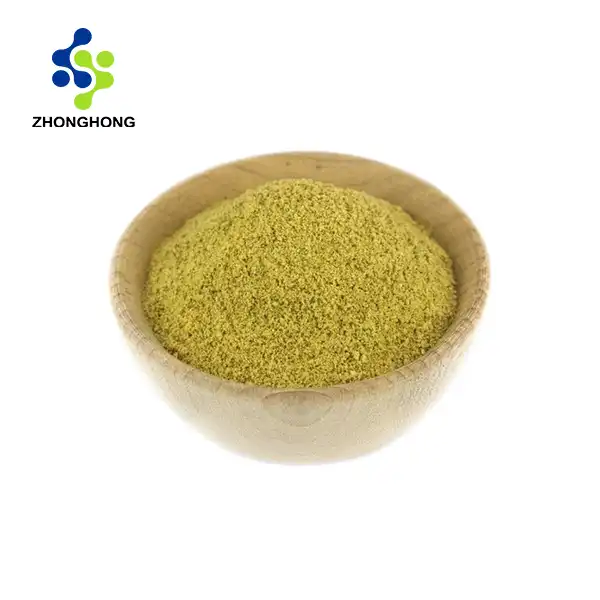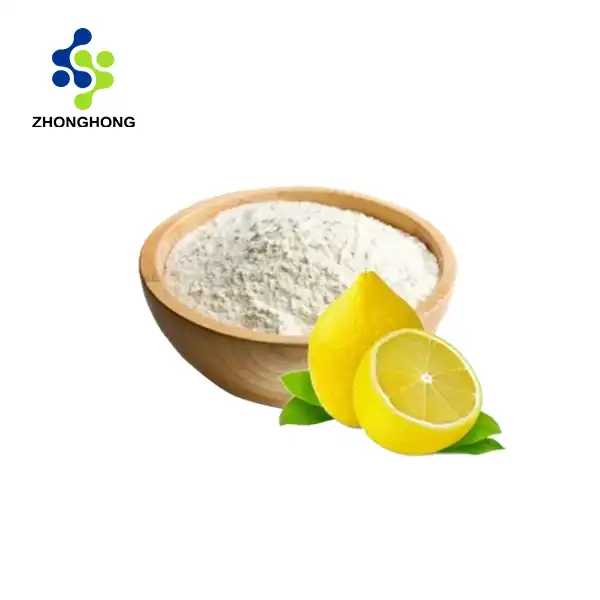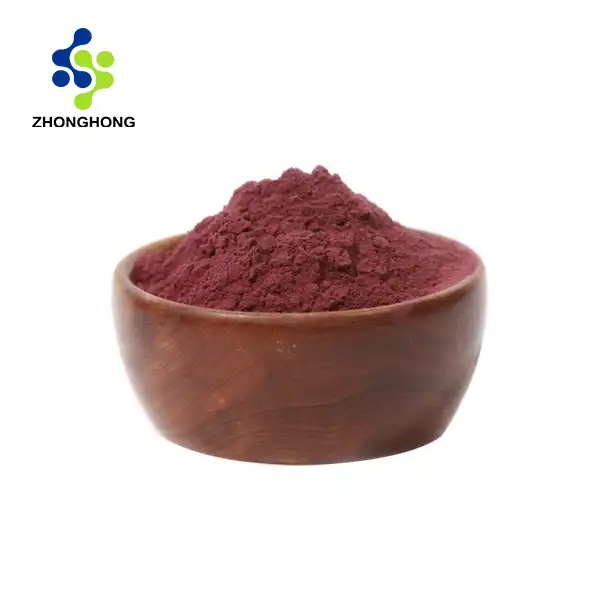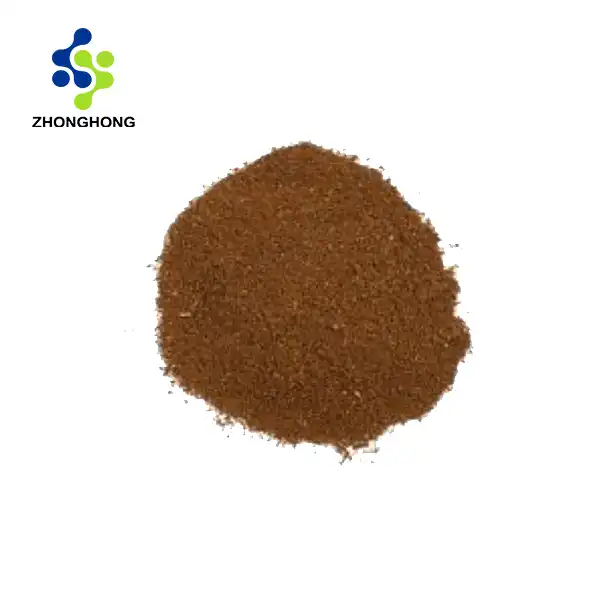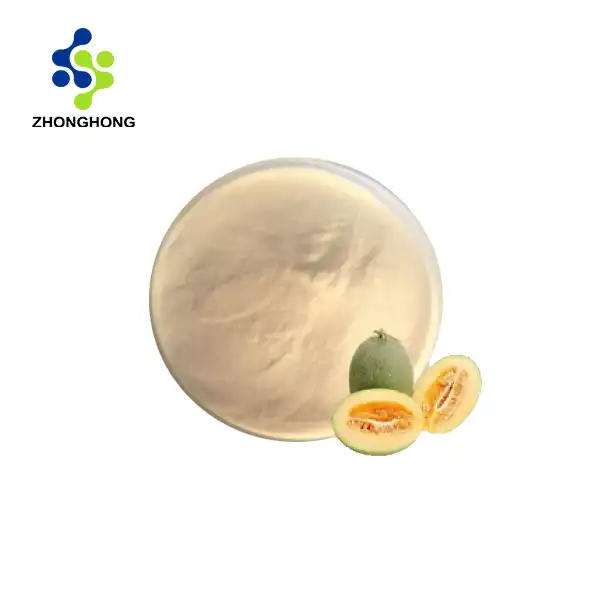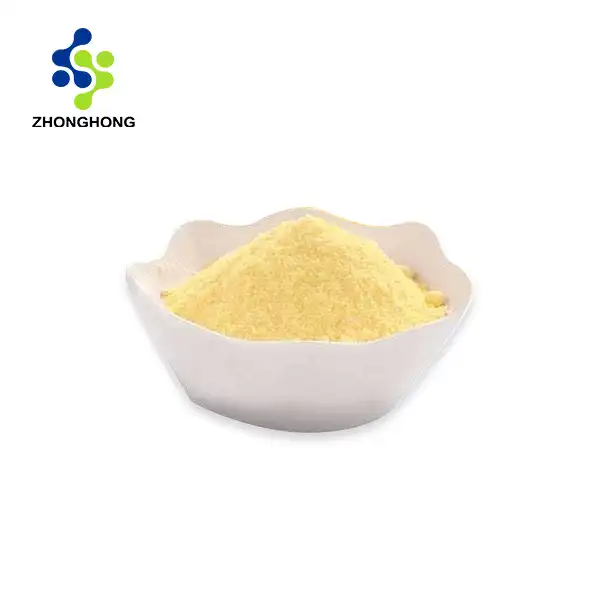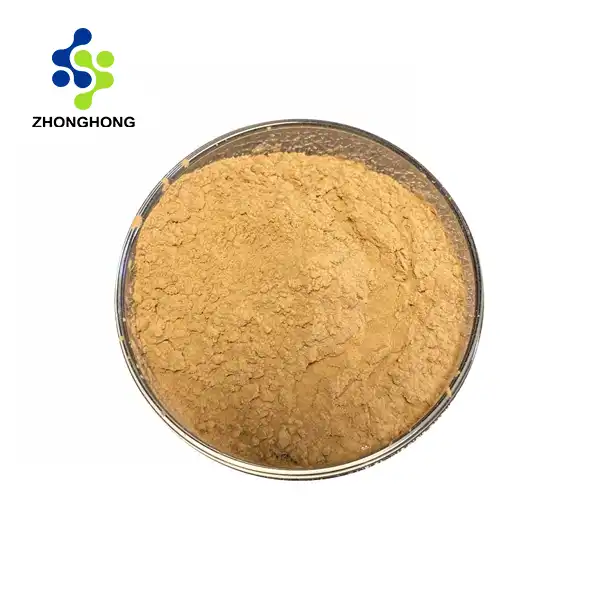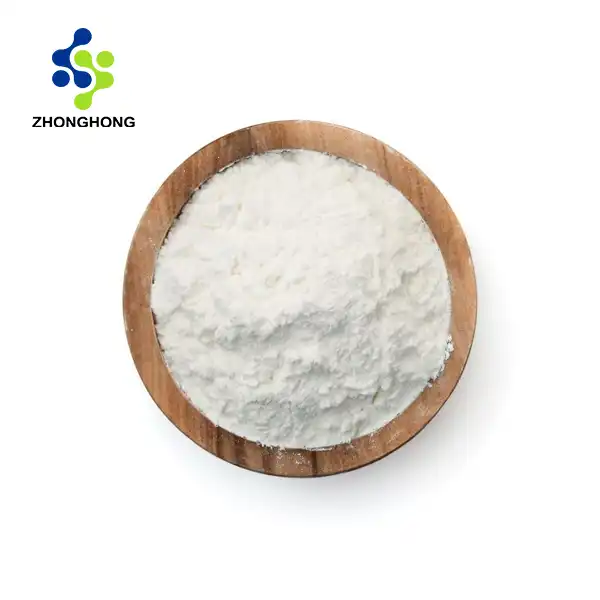Understanding Kojic Acid Powder and Its Properties
Chemical Structure and Stability
Kojic acid, a natural compound derived from various fungi species, possesses a unique chemical structure that contributes to its stability and reactivity. The molecule consists of a 4-pyrone ring with a hydroxymethyl group at the 2-position and a hydroxyl group at the 5-position. This arrangement allows kojic acid to form complexes with metal ions, particularly iron, which is crucial for its skin-lightening properties. However, this structure also makes kojic acid susceptible to oxidation and degradation when exposed to light, heat, or extreme pH conditions. Understanding these molecular characteristics is essential for developing effective formulations and storage strategies to maintain the potency of kojic acid powder.
Solubility Profile
The solubility of kojic acid powder varies depending on the solvent and environmental conditions. It exhibits moderate solubility in water, with improved dissolution at higher temperatures. Organic solvents such as ethanol, methanol, and acetone also effectively dissolve kojic acid. The compound's solubility is pH-dependent, with optimal dissolution occurring in slightly acidic conditions. This solubility profile influences the choice of solvents and formulation techniques when incorporating kojic acid into various products, from cosmetics to pharmaceutical preparations.
Factors Affecting Dissolution
Several factors impact the dissolution of kojic acid powder. Temperature plays a significant role, with higher temperatures generally improving solubility but potentially compromising stability. The pH of the solution is critical, with kojic acid showing better solubility and stability in mildly acidic environments. Particle size of the powder affects dissolution rate, with finer particles dissolving more rapidly. Additionally, the presence of other ingredients in the formulation can influence kojic acid's solubility through interactions or competition for solvent molecules. Considering these factors is crucial for achieving optimal dissolution and maintaining the efficacy of kojic acid in various applications.
Dissolution Methods for Different Applications
Cosmetic Formulations
In cosmetic applications, kojic acid powder is often incorporated into serums, creams, and lotions for its skin-lightening and antioxidant properties. For these formulations, a common approach is to dissolve kojic acid in a mixture of water and a humectant like glycerin or propylene glycol. This combination helps maintain skin hydration while ensuring proper dissolution. Start with a small amount of the water-glycerin mixture and gradually add kojic acid powder while stirring. Gentle heating to about 40-45°C can facilitate dissolution, but avoid prolonged exposure to high temperatures. Once fully dissolved, the solution can be incorporated into the cosmetic base, ensuring the final product maintains a slightly acidic pH for optimal stability and efficacy.
Pharmaceutical Preparations
For pharmaceutical applications, the dissolution of kojic acid powder requires careful consideration of bioavailability and stability. In oral formulations, kojic acid can be dissolved in a suitable pharmaceutical-grade solvent, such as purified water or ethanol, depending on the dosage form. For topical preparations, a combination of water and pharmaceutical-grade alcohol may be used. The pH of the solution should be carefully controlled, typically between 3.5 and 4.5, to maintain stability and enhance percutaneous absorption. In some cases, buffer systems may be incorporated to maintain the optimal pH range. It's crucial to ensure that all solvents and excipients used are compatible with kojic acid and do not interfere with its therapeutic activity.
Research and Analytical Purposes
In research and analytical settings, the choice of solvent for dissolving kojic acid powder depends on the specific experimental requirements. For spectrophotometric analysis, water or methanol are commonly used solvents. When preparing stock solutions for high-performance liquid chromatography (HPLC) analysis, a mixture of water and acetonitrile or methanol is often employed. For in vitro studies, dissolution in cell culture media may be necessary, which might require the use of a small amount of DMSO as a co-solvent to improve solubility. It's important to note that the choice of solvent can affect the results of analytical procedures, so standardization and validation of dissolution methods are crucial for ensuring reproducible and reliable research outcomes.
Optimizing Dissolution Techniques
pH Adjustment Strategies
Optimizing the pH during kojic acid powder dissolution is crucial for maximizing solubility and stability. The ideal pH range for kojic acid solutions typically falls between 3 and 4. To achieve this, use buffer systems such as citrate or acetate buffers. When adjusting pH, add small amounts of dilute acid (e.g., citric acid) or base (e.g., sodium hydroxide) while continuously monitoring with a calibrated pH meter. It's important to make gradual adjustments to avoid overshooting the target pH. In some cases, incorporating pH-adjusting agents like triethanolamine or lactic acid into the formulation can help maintain the optimal pH range over time. Remember that extreme pH conditions can lead to degradation of kojic acid, so careful control is essential for preserving its efficacy.
Temperature Control Techniques
Temperature plays a significant role in the dissolution of kojic acid powder. While elevated temperatures can enhance solubility, excessive heat can lead to degradation. For optimal results, maintain a temperature range of 30-40°C during the dissolution process. Use a water bath or a temperature-controlled magnetic stirrer to achieve precise control. When heating is necessary, employ gentle warming techniques and avoid direct heat sources. It's crucial to monitor the temperature continuously using a calibrated thermometer. After dissolution, allow the solution to cool gradually to room temperature before further processing or storage. For temperature-sensitive formulations, consider using alternative techniques such as sonication or high-shear mixing to aid dissolution without the need for heating.
Enhancing Stability of Dissolved Solutions
Maintaining the stability of kojic acid solutions is essential for ensuring long-term efficacy. To enhance stability, incorporate antioxidants such as butylated hydroxytoluene (BHT) or vitamin E into the formulation. These compounds help prevent oxidation of kojic acid, especially in aqueous solutions. Light protection is crucial, so store solutions in amber or opaque containers to minimize photodegradation. For improved shelf life, consider adding chelating agents like EDTA to bind metal ions that could catalyze degradation reactions. In some cases, microencapsulation techniques can be employed to protect kojic acid from environmental factors. Regular stability testing, including monitoring pH, color changes, and active ingredient concentration, is essential for ensuring the quality and efficacy of kojic acid solutions over time.
Conclusion
Dissolving kojic acid powder effectively requires a nuanced approach tailored to specific applications. By understanding its properties, optimizing dissolution techniques, and implementing stability-enhancing strategies, formulators can maximize the benefits of this versatile compound. Whether for cosmetic, pharmaceutical, or research purposes, proper dissolution is key to harnessing the full potential of kojic acid. If you want to get more information about kojic acid powder, you can contact us at liaodaohai@gmail.com.
_1728976869676.webp)
